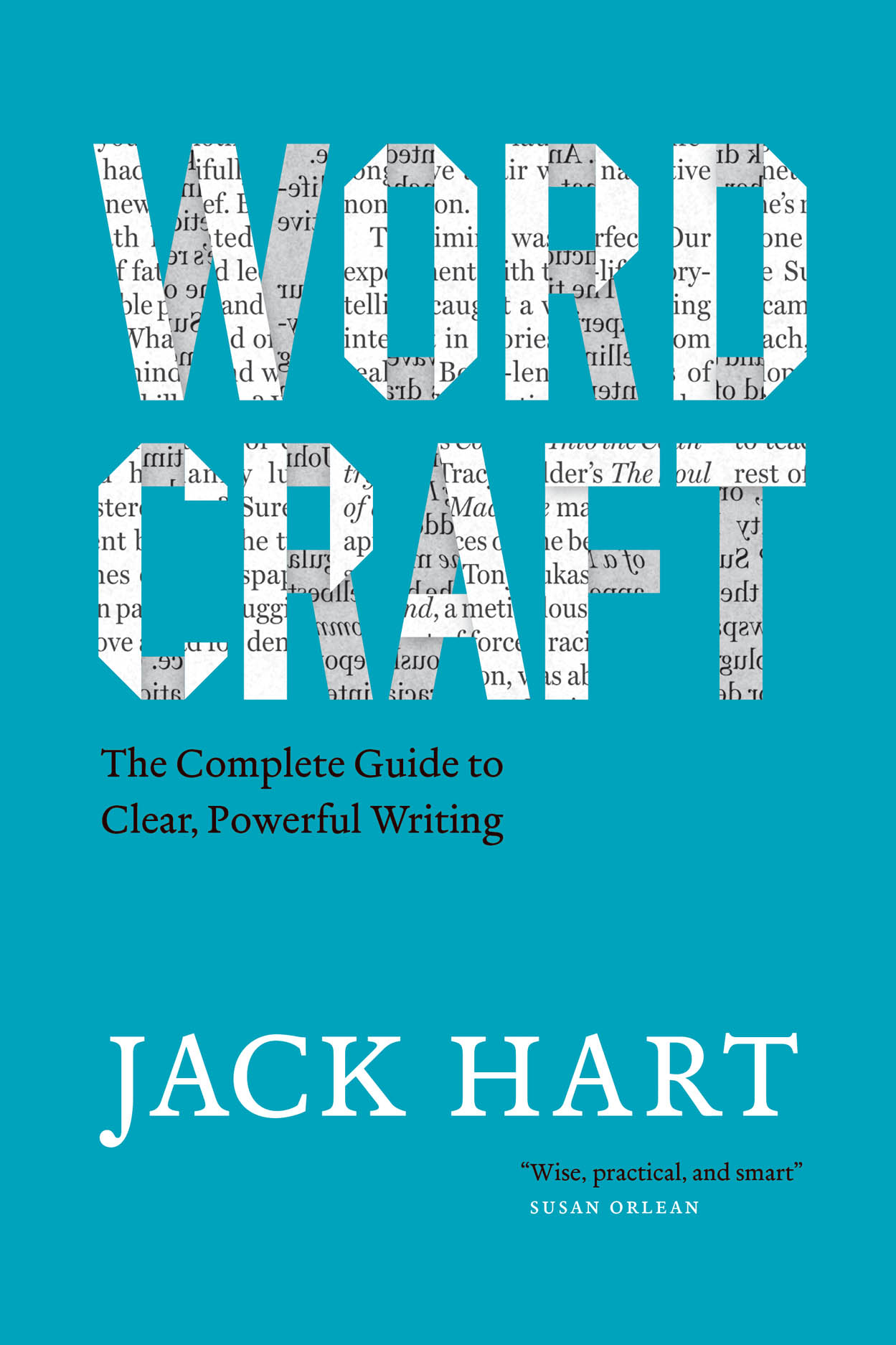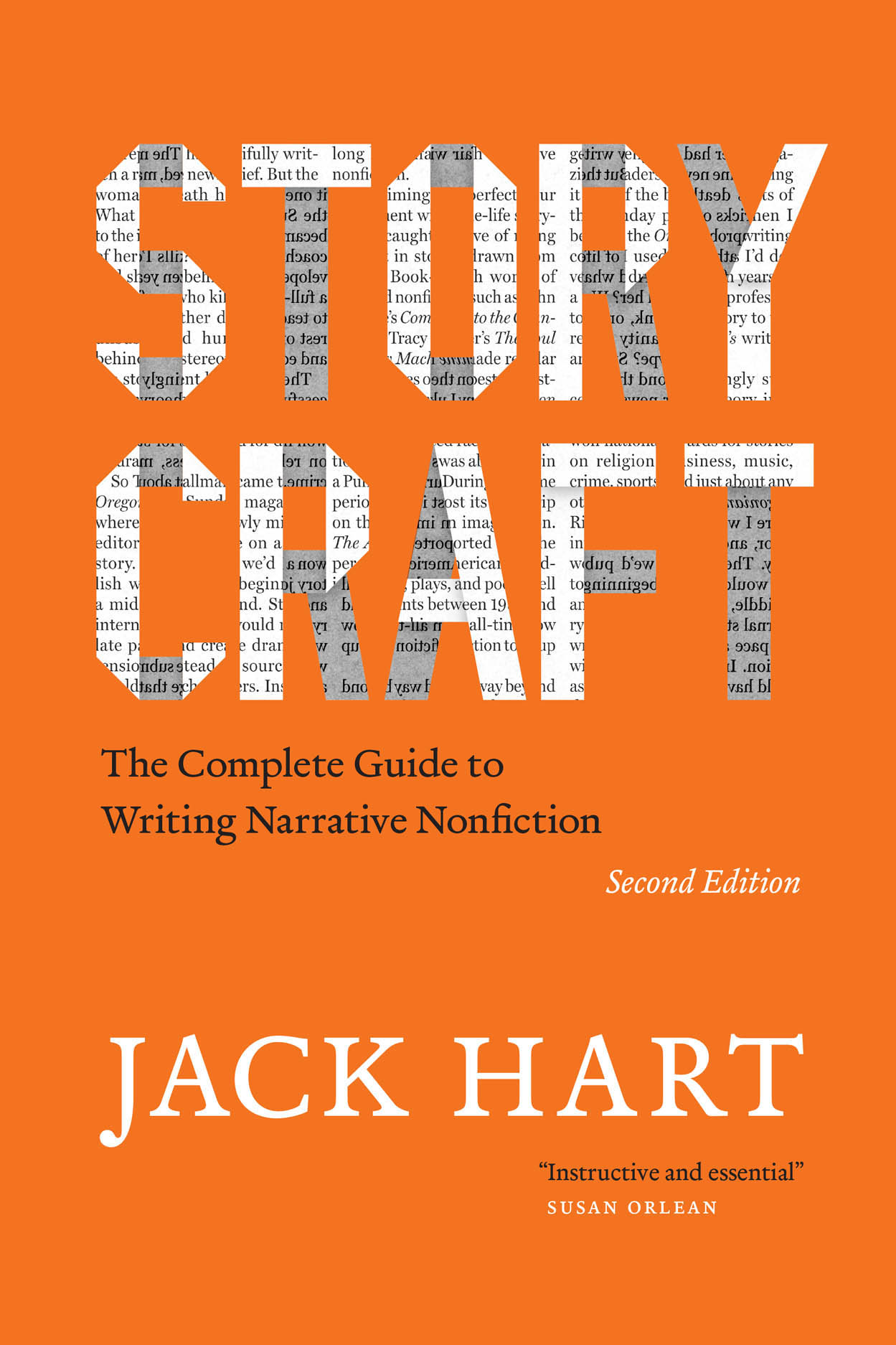Wordcraft and Storycraft: A Note from Jack Hart
Great writing happens not through some dark art, but when method meets craft. The secret—if there is one—is to take one manageable step at a time. Superman may leap tall buildings in a single bound, but the best writers I know sit down at their keyboards and write one line. And then another. And another.
That’s how it’s done, in writing or anything else.
The same is true about storytelling. Successful narrative nonfiction demands
neither blinding talent nor decades in a writer’s garret. If you’re interested in
exploring the art of true-life storytelling, don’t let lack of experience intimidate
you.
The only real requirement for great writing is determination to master the craft,
and the common ingredient in all great writing is the love of writing itself.
Wordcraft was first published by Random House in 2006 under the
title A Writer’s Coach. I’d originally planned this title and conceived
of it as book 1 in a two–book set. Book 2 would pass along what I’d
learned in a long career of editing and coaching narrative nonfiction
and would be called Storycraft.
But when Random House bought the rights to book 1, someone
in the bowels of that giant company discovered a conflict with the
title of another book on its list. My editor informed me that we’d
have to change the title and came up with A Writer’s Coach. Not a
bad title, to be sure, but not what I’d intended. A few years later, I published book 2 as Storycraft with the University of Chicago Press.
Now that I have had the opportunity to bring the two books together
at Chicago as the package I’d originally envisioned, we’ve recovered
the lost title. More important, I have revised the book to
take note of the changes that have shaken the writing world since
its original publication. While the original edition assumed an
audience consisting primarily of newspaper and other print journalists,
I learned over the lifespan of the original edition just how
relevant the advice is to writers of all kinds. Some sections may still
be especially useful to print journalists, but I now address most
of my advice to anyone who wishes to understand and follow the
principles of good writing. That means, of course, just about everybody.
Professionals such as lawyers and advertising and public
relations types have always had to reach out with the written word.
But these days we all have keyboards in our hip pockets,
and the amount of influence and connection we have in this
world depends, to some degree, on how well we use them.
And so, as an outpouring of recent scientific research has
demonstrated, does an ability to move audiences with effective stories.
Those same lawyers and marketing types who depend on clear, effective
writing to power their careers have discovered the value that good storytelling
has in persuading juries or selling a brand. More than ever, the lessons I incorporated
in both books 1 and 2 have proved useful far beyond print newsrooms.
So, while updating Wordcraft I simultaneously revised Storycraft so that the
books function as the set I’d pictured at the very beginning. Taken together, the
two volumes capture just about everything I learned about writing and storytelling
over a long and very satisfying career. If I’d had them when I started out
all those decades ago, they’d have speeded my education, eliminating years of
trial and error and benefiting not only me but also all the fine writers and eager
students I worked with over the years.
Now that you do have them, you have a leg—or two—up on me at your age.
Which means you should be able to climb higher than I ever did. If you enjoy
the fruits of fine writing half as much as I have, all of the effort—mine and
yours—will have been more than worth it.
During decades spent editing some of the country’s most successful nonfiction writers, I had a rare chance to learn what creates compelling true stories, and I’ve collected those lessons in Storycraft: The Complete Guide to Writing Narrative Nonfiction. Most of the examples I’ve used are available in bookstores, libraries, or on–line. But some of the stories I edited, including newspaper narratives that won Pulitzer Prizes and other national awards, are less accessible. So we’ve posted the complete versions here in “Beyond Storycraft.”.


